Sports Science
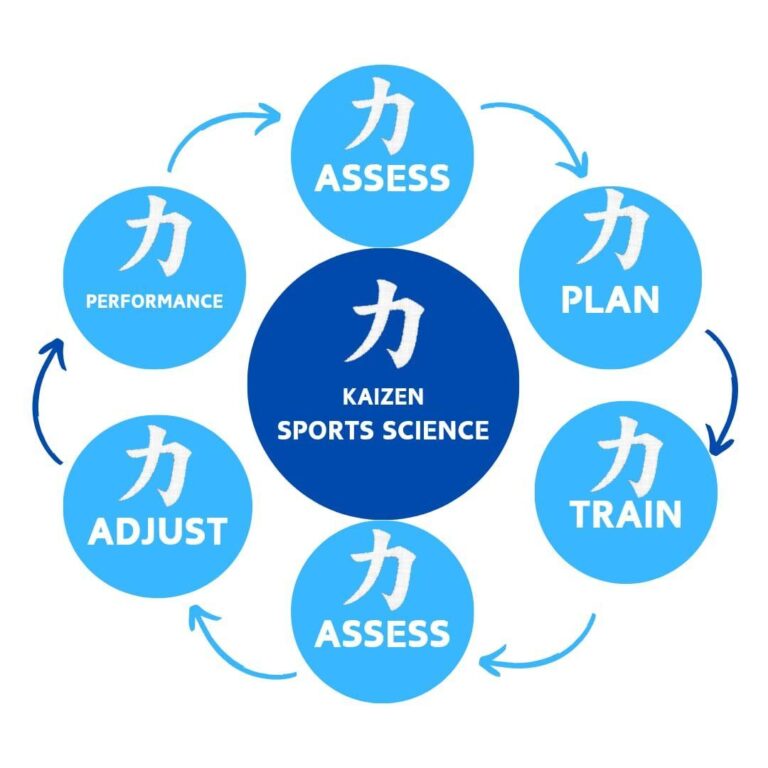
Have You Heard of the Fitness-Fatigue Model?
The Fitness-Fatigue Model, also known as the Two-Factor Model, was developed by Bannister in 1975 as a way to understand how training affects athletic performance by balancing gains (fitness) and temporary losses (fatigue).
The core idea of the model is that when we train, our body undergoes two simultaneous responses:
- Fitness (Physical Aptitude) – The positive adaptations from training, such as increased strength, endurance, and technical skills. These effects, although more subtle, are long-lasting and help improve performance.
- Fatigue – The negative impacts of training, such as muscle soreness, neuromuscular exhaustion, and accumulated physiological stress. Fatigue has a greater and more immediate effect, which can temporarily mask fitness gains.
An athlete’s performance is then determined by the balance between these two factors:
Performance = Fitness − Fatigue
If fatigue is too high, performance may temporarily drop, even if the athlete has improved their physical fitness. This explains why intense training can initially make an athlete feel worse before they recover and reach a new level of performance.
How Does This Apply in Practice?
- Supercompensation: If training load is well-planned, the athlete can train, accumulate fatigue, rest, and then experience a performance boost once fatigue decreases.
● Performance Peak: Coaches adjust training to reduce fatigue at the right moment, allowing athletes to reach their peak performance on competition day.
● Overtraining: If fatigue becomes excessive and recovery time is insufficient, the athlete may enter a state of overtraining, where performance declines instead of improving.
The Fitness-Fatigue Model has influenced many periodization strategies and training load management approaches, helping athletes and coaches balance training intensity and recovery to maximize performance.
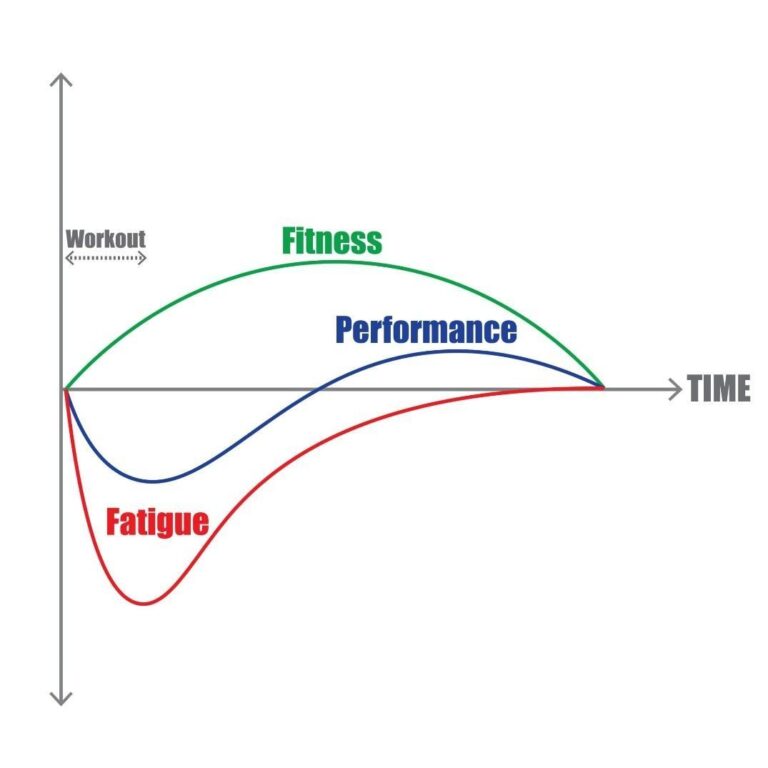
Observing the graph above, we can notice that the fatigue curve is larger than the fitness curve. However, this is not a problem because the effects of fitness last longer than those of fatigue. Over time, fitness surpasses fatigue, leading to performance improvement.
And this is exactly where the three pillars we offer come into play – they are the essential tools to ensure that the performance curve continues to rise.
Have you ever heard of the Performance Triad? To achieve high performance, it is necessary to balance three factors: Training + Nutrition + Rest. If any of these are lacking, performance will be compromised and will not reach its full potential.

Assessments
We use force plates (the gold standard for measuring strength, power, and asymmetry), a cutting-edge hand-held dynamometer (HHD), a high-resolution thermographic camera, and other state-of-the-art equipment. This ensures reliable data to optimize your performance and prevent injuries.

We offer a wide range of services organized into three main pillars:
Performance
Identifying where you are and where you need to go:
- Force-Velocity Curve (F-V): We determine where your sport falls on the curve (more strength? more speed?) and assess whether your current profile matches those demands.
Example:
An American football player needs to know whether to focus more on maximum strength (pushing opponents, breaking tackles) or explosive speed (sprints, agility). With the right tests, we adjust training so that the athlete develops exactly what their sport requires.
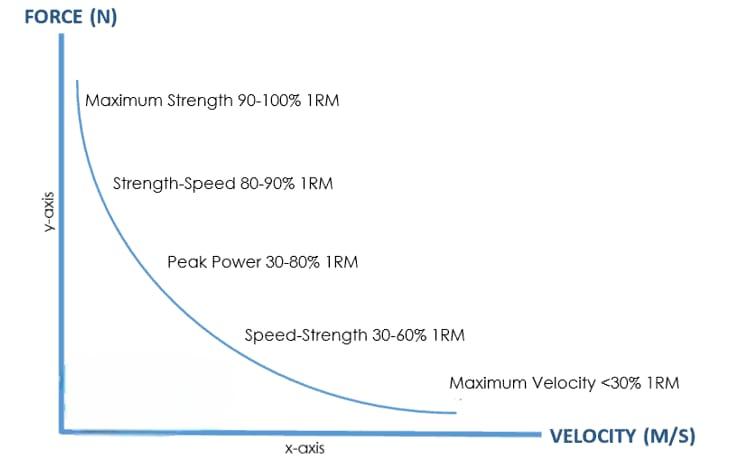
After understanding the F-V curve of your sport, we will use a corresponding test to evaluate you and identify your strengths and weaknesses.
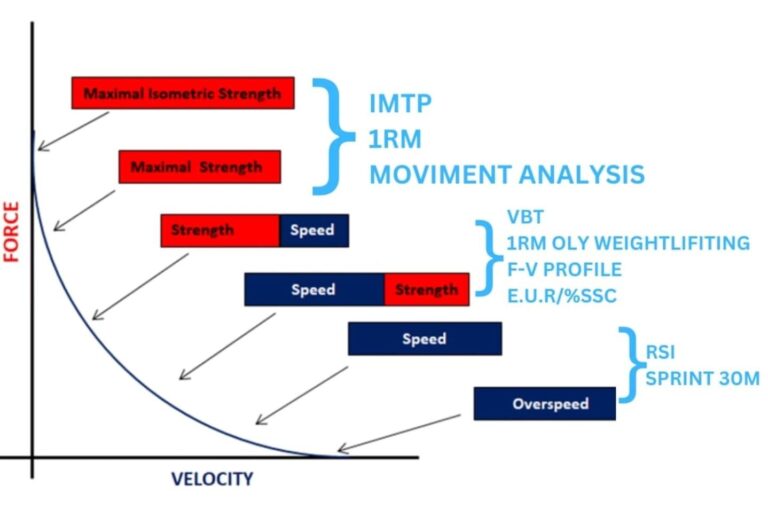
Main Performance Tests
- IMTP (Isometric Mid-Thigh Pull): Evaluates maximum strength and rate of force development (RFD).
● CMJ (Countermovement Jump): Assesses lower limb power and explosiveness.
● SJ (Squat Jump): Measures the “pure” power of the muscles without the aid of the elastic reflex.
● Drop Jump: Examines reactive strength and muscle elasticity.
● CMPU (Countermovement Push-Up): Measures upper-body explosiveness similarly to the CMJ.
● EEUR (Explosive Eccentric Utilization Ratio) & %SSC: Evaluates the efficiency of elastic strength in the stretch-shortening cycle (SSC).
● DSI (Dynamic Strength Index): Compares your maximum strength (IMTP) with your power (CMJ), indicating whether you need to focus more on strength or explosiveness.
● RSI (Reactive Strength Index): Measures the ability to quickly switch between force absorption and production.
Each of these tests generates nearly a hundred data points, which we analyze to create a precise report and tailor a training plan that meets your specific needs.
Benchmark in Sports
A benchmark is a reference parameter that helps place an athlete in relation to best practices for their sport. Instead of directly comparing competition statistics (such as goals, points, or shots), we focus on physical tests and data obtained from assessments, such as jump height in the Countermovement Jump (CMJ), maximum repetitions in a given exercise, or speed test results.These reference values can come from international standards, elite athlete averages, or even internal team records.
By comparing an athlete to these benchmarks, we identify which aspects need improvement in terms of strength, power, endurance, or speed and where they already perform above average. This guides the selection of training protocols and sets individual short- and long-term goals, providing a clear path to reaching or surpassing the ideal level in their sport.
KPI (Key Performance Indicator) in Sports (Strength & Conditioning)
KPIs in physical preparation are metrics specifically chosen to monitor, in real-time, the athlete’s progress in the most relevant variables for their development. Unlike benchmarks—which establish a comparison with external values—KPIs are internal values, personalized for each training program and each athlete’s objective. Examples include the percentage improvement in vertical jump, the increase in maximum strength in functional exercises, or progress in sprint speed measured periodically.
By analyzing these key indicators, the strength & conditioning team can adjust the training volume and intensity, as well as periodize recovery according to the athlete’s responses. Thus, KPIs become a practical guide to identifying progress, maintaining motivation, and anticipating potential issues, such as sudden performance drops that may indicate excessive fatigue or injury risk. In this way, any deviation from the training plan is quickly corrected, ensuring that the athlete evolves consistently and sustainably toward a high-level physical performance.
Injury Prevention
How is injury prevention carried out? First, by identifying weaknesses and physical and muscular imbalances, such as bilateral asymmetry (between the right and left sides), asymmetry between agonist and antagonist muscles, and detecting local temperature variations that indicate physiological and metabolic alterations, in addition to strategically strengthening the body.
- Infrared Thermography: Detects overloads and thermal changes that indicate possible inflammations or imbalances.
● Asymmetry Detection: Using the force platform, we measure strength differences between the right and left sides or between agonist and antagonist muscles.
● Hand-Held Dynamometer (HHD): Evaluates joint strength in specific muscle groups, identifying weaknesses and imbalances that may lead to pain or future injuries.
● H:Q Ratio (Hamstring-to-Quadriceps Ratio): Checks for muscular balance in the thigh to reduce the risk of injuries and knee overload.
Training & Monitoring
With our training methodology, we design and quantify your training program based on your current physical capacity and your end goal—whether that’s becoming an Olympic champion, climbing Mount Everest, keeping up with your kids on a busy weekend, or simply gaining more autonomy and energy in your daily life.
Training stimuli are always planned with evolution in mind, ensuring a supercompensation effect that maximizes performance improvements.
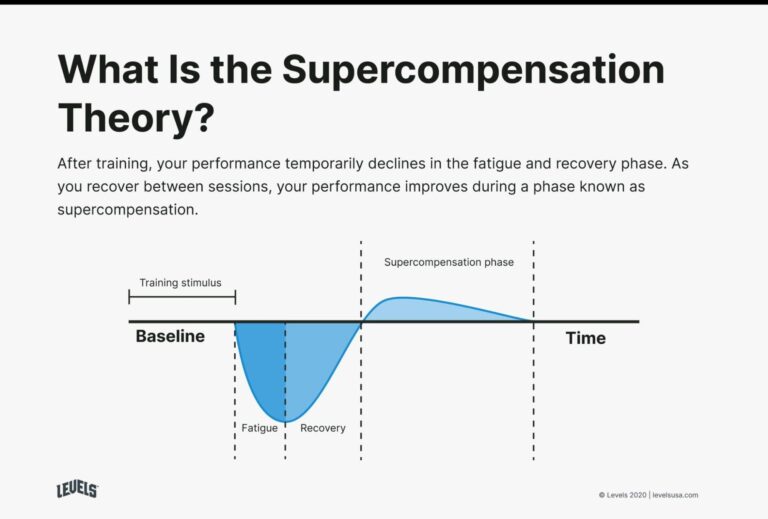
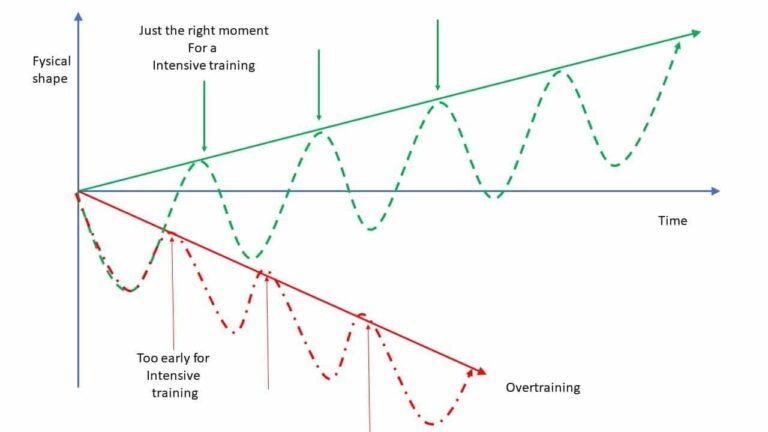
But this stimulus needs to be ideal—just like the green line dynamics—meaning it should not be too weak (a weak stimulus would lead to detraining, or a decrease in performance) nor too excessive—as shown in the red line. An excessive stimulus would be so intense that the recovery time between training sessions would be insufficient, preventing supercompensation and, just like a weak stimulus, would cause a drop in performance, potentially leading to overtraining syndrome.
- Personalized Periodization: Training balanced according to your needs and goals; we plan when and how to increase loads to improve functional levels and when and how to decrease the load, ensuring recovery for peak performance at the right time (competitions, trips, personal goals).
- LTAD (Long-Term Athlete Development): LTAD is an approach that promotes the gradual and sustainable development of physical capacities, preventing burnout and early injuries, ensuring that the athlete reaches their maximum potential at the right time. During childhood and adolescence, the human body goes through ideal periods to improve different skills, such as strength, power, speed, coordination, and flexibility. Respecting these developmental periods is crucial to optimizing athletic performance and ensuring a healthy and balanced progression.
- Advanced Monitoring:
○ HRV (Heart Rate Variability): Indicates fatigue and recovery levels, preventing overtraining.
○ Load Control via Force Plate: Regularly performed jumps, such as CMJ, can indicate readiness and whether the body is prepared to increase loads or needs rest.
○ Psychometric Assessments (RPE, PSR, TQR, Well-Being, BRUMS, POMS, DALDA, among others): Each person reacts uniquely to training; these indicators provide valuable insights into the physical and mental state of the practitioner, allowing for smarter and safer adaptations in the daily training plan.

